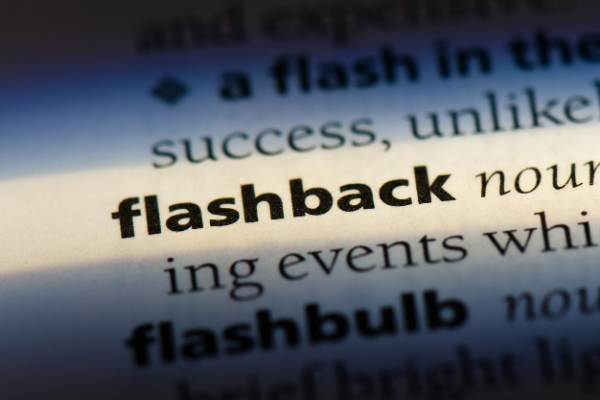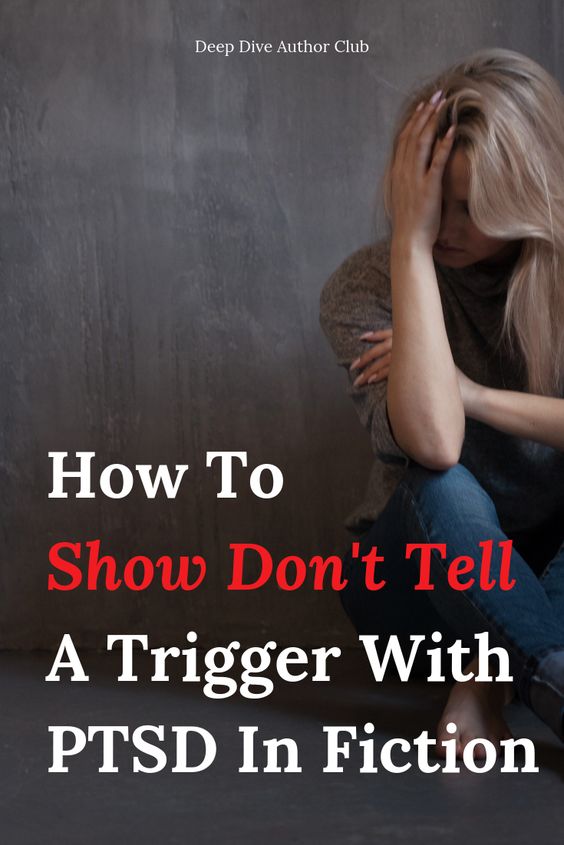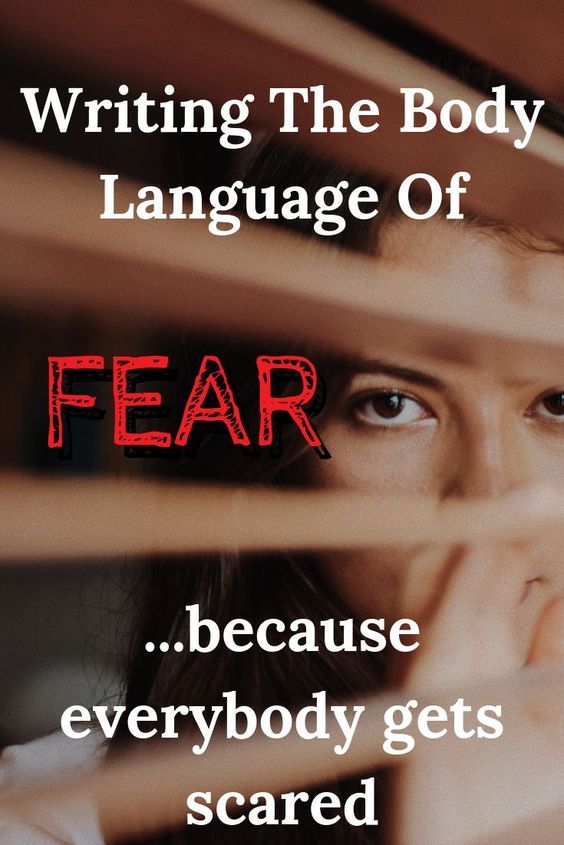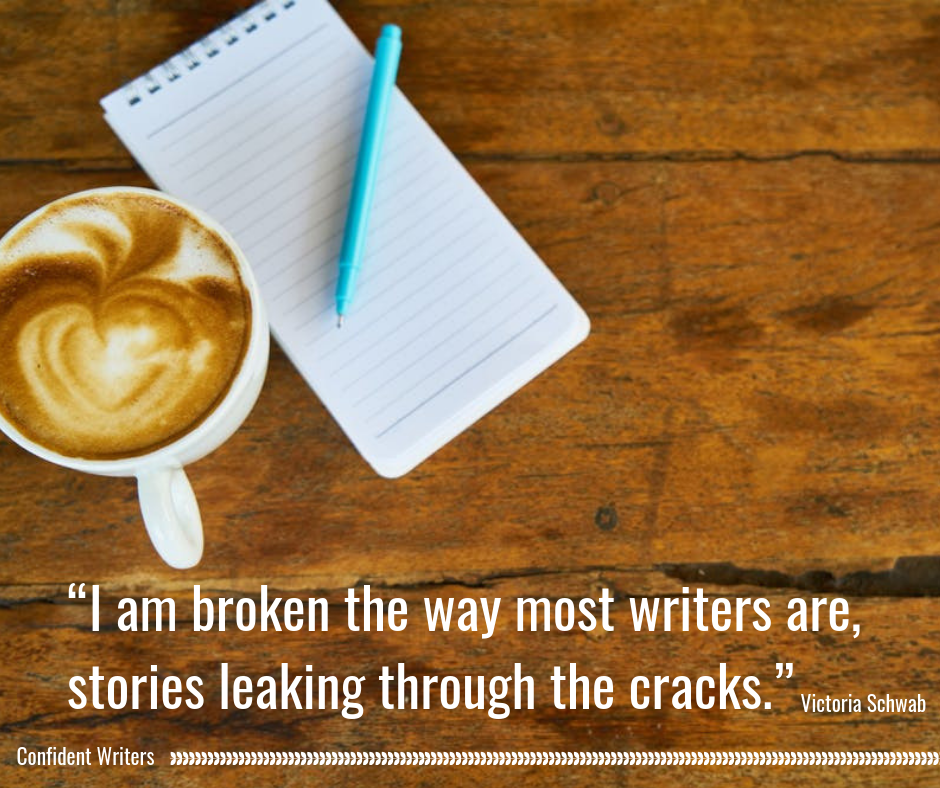
Flashbacks are super popular among writers, but less popular among editors and agents. Partly because some writers call info dumps and backstory “a flashback.” If you’re interested in diving deep into writing flashbacks caused by trauma and PTSD, read on because I have some good tips for you!
Quick Recap: What Is Deep Point Of View?
Deep point of view is a stylistic choice to remove the perceived distance between the reader and the point of view character. This technique puts the reader IN the story as it’s happening. The reader knows everything the point of view character knows/sees/hears/etc. but that’s all they know.
If you’re not sure if you’re writing in deep point of view or not, check out this guest post I did at Writers In The Storm and then come back here and learn more about writing flashbacks in deep pov.

What Is A Flashback?
In my online classes, I often get asked for help in writing two kinds of flashbacks. One kind of flashback is the idea of a glimpse into a character’s past, basically a cut scene to something’s that happened before. This is usually written as a dream or as backstory. These are really hard to do well in deep pov because much of the time they come across as author intrusion.
Be objective about whether the reader needs to know ALL of that info in one place. My personal rule for backstory is to answer one question for the reader and leave them with two more. To drip in the backstory a sentence, a phrase, at a time. If you’ve got a paragraph, two paragraphs, a whole chapter — that’s just a look at the past, for the sake of looking at the past, “kill your darlings.” Yes, other authors use them, and they’re not wrong per se, but there’s a great post here by K.M. Weiland about writing this type of flashbacks.
Flashbacks As A Symptom Of Past Trauma
I’ve written before about writing trauma backstories and even writing PTSD in deep pov. So, let’s dig a little deeper into flashbacks as a symptom of PTSD as a storytelling device.
First, please do some research into PTSD before tritely using flashbacks. According to Psychiatry.com PTSD occurs in 7%-8% of the population and is twice as likely in women as men. PTSD makes a great source of internal conflict in fiction especially as general awareness of the condition grows, but don’t be a source of mis-information. Don’t cheat your reader! **climbs off soapbox**
We want to show and not tell, but deep pov takes this to all new levels. So, how do we show a flashback so readers know that’s what’s happening without TELLING them it’s a flashback?
Here’s the thing: a flashback is your body reliving the worst event of your life over and over without any warning or control to stop it from happening. It’s more like a nightmare than a memory, because it can be completely immersive and block out all sense of time and place.
Think about that for a moment. How would that daily reality affect you? If you’re using flashbacks, be sure to learn about all of the other symptoms of living with PTSD: hyper-vigilance, inability to sleep (not always insomnia), nightmares, avoidance, exhaustion, heightened startle reflex, trust issues, inability to concentrate, irritability, physical pain, sweating, etc.

Actors use this trick called Emotive Memory – they are able to recall an event from their past with such intensity they can relive that emotion. When you’re writing flashbacks, think about the absolute worst thing that’s ever happened to you, really let it well up and overwhelm you (stay safe), and recapture how that felt. How did your body respond? Now, imagine those feelings amplified by a life or death consequence to that event. Now, imagine living with the constant reality of having that memory pouncing on you like a starving lion at any moment. And knowing that people will think you’re insane if they find out what’s really going on with you.
Fight, Flight And Freeze Responses
Many are familiar with the fight or flight responses. Anger and violence are common responses to PTSD flashbacks. Leaving immediately, without explanation, or avoiding any situation that could trigger a flashback is also common. The survival response fewer know about is Freeze.
For those who experienced a trauma where they couldn’t escape, they were literally overpowered. They couldn’t fight back because the perpetrator was too strong (physically, or because of a power imbalance). The brain turns to the last option available to it in order to survive – dissassociation. They go numb. Their mind goes blank, or they disconnect mentally from what’s happening to their bodies. They comply.
These survival instincts will all trigger a similar physical response – increased heart rate, sweating, tidal wave of adrenaline, you breathe heavily. The processes not needed to help you take quick action are turned off or un-prioritized – like thinking. Unlike a general anxiety attack, you can’t think your way out of a PTSD flashback or attack. All you can do is remove yourself from the perceived threat.

Here’s the thing about a fear response. When faced with a real life-threatening situation, your body will act without you thinking about it. It’s an instinctual response right, like being startled. Most of the time, when faced with an imaginary fear (such as public speaking, where there’s no real physical threat), we struggle with indecision, second guess ourselves, etc. Do you see the difference?
Flashbacks Should Be An Individual Response
Flashbacks come in various severities, so do some research into them. At its most severe, a flashback can cause you to lose all connection with your current reality, like a nightmare you can’t wake up from.
“…When discussing the topic of flashbacks with friends and family, most assume it’s just a memory, like remembering your first kiss or your first time at Disneyland. However, that’s not what it’s like at all. For most people, myself included, flashbacks are an intense re-experience of a traumatic event, which feels like it’s happening now and involves all your senses. In effect, it feels like being re-traumatized, even though you are not actually experiencing the event for real…” Read the whole post here.
There are emotional flashbacks, where you remain conscious of where you are and whether you’re physically safe, but your body is convinced you’re in imminent danger and that emotional response tangibly controls you.
“…Because most emotional flashbacks do not have a visual or memory component to them, the triggered individual rarely realizes that she is re-experiencing a traumatic time from childhood…” Read the whole post here.
Don’t Cheat Readers On The Consequences Of Flashbacks
Flashbacks, particularly if they sneak up on you, are exhausting. Like, bone weary, sleep for a week and still be tired, exhausted. There will be heightened vigilance following a flashback, because the character will want to make sure that doesn’t happen again. There may be actual consequences because of their behavior. You can’t randomly run out of a board meeting without explanation and there not be social or professional consequences. Most people don’t want others to know they’re struggling, so do some research into the coping mechanisms used.
Writing Internal Dialogue During A Flashback
The internal dialogue is what most people tend to struggle with. Remember, in deep pov, internal dialogue must be written as though the character is alone in their own heads. They won’t explain to themselves what the traumatic event was, when it happened, who hurt them. You’ll have to strategically build in the necessary backstory for readers, one drip at a time, over the course of the story.
Do you have any questions about flashbacks in deep pov? Is this a device that you’re using? Where are you struggling?
Been told you should learn Deep Point Of View? Had an editor or critique partner tell you to “go deeper” with the emotions in your fiction? Looking for a community of writers seeking to create emotional connections with readers? Check out the Free Resource Hub and then join the Going Deeper With Emotions In Fiction Facebook group.

This is a fantastic post and really helpful for me as a historical romance writer. I tend to torture my characters – not because I dislike them, but because I want a sense of realism to the time period. I found the information here to be immensely helpful when it came to writing about period specific events.
Great! Glad it was helpful. I’ve never regretted digging deeper into the emotions of a character.
Do you have a scene example for a flashback? Do I include images or focus on the feelings?